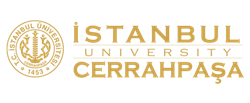AIM: This study aimed at monitoring breastfeeding behaviors in primiparous mothers with risky and non-risky age groups prospectively.
METHOD: This is a kind of comparative and prospective study that was carried out in 306 mothers who were registered at seven family health centers. The study sample comprised 68 primiparous mothers who were in the risky age group and 238 primiparous mothers who were not in the risky age group. It was interviewed with the mothers twice when their babies were one and six months old. Personal Information Form, Breastfeeding Self-Efficacy Scale-Short Form (BSES-SF), and LATCH Breastfeeding Assessment Tool were used for data collection.
RESULTS: The mothers in the risky age group had a lower breastfeeding rate when their babies were one month old and a higher formula feeding rate when their babies were six months old than the rates observed in case of the mothers in the non-risky age group. Mothers in the non-risky age group breastfed 14.8 times more in the first month and 5.4 times more in the sixth month than those in the risky age group. The mean scores of LATCH and BSES-SF in the first month and the mean scores of BSES-SF in the sixth month of mothers in the non-risky age group were higher than those of the mothers in the risky age group.
CONCLUSION: It was determined that primiparous mothers in the non-risky age group exhibited more positive behaviors in terms of breastfeeding. Close monitoring of breastfeeding behaviors of mothers in the risky age group could be recommended.
Riskli Yaş Grubunda Olan ve Olmayan Primipar Annelerin Emzirme Davranışlarının Prospektif Olarak İzlenmesi
AMAÇ: Bu araştırmada riskli yaş grubunda olan ve olmayan primipar annelerin emzirme davranışının prospektif olarak belirlenmesi amaçlanmıştır.
YÖNTEM: Araştırma, yedi aile sağlığı merkezine kayıtlı 306 anne ile yürütülen karşılaştırmalı ve prospektif tipte bir çalışmadır. Örneklemi, riskli yaş grubunda olan 68 ve riskli yaş grubunda olmayan 238 primipar anne oluşturmuştur. Annelerle, bebekleri bir ve altı aylık olduklarında ikişer kez görüşülmüştür. Veriler Kişisel Bilgi Formu, Emzirme Öz Yeterlilik Ölçeği kısa formu (EÖYÖ) , Emzirme Tanılama Ölçüm Aracı (LATCH) ile toplanmıştır.
BULGULAR: Riskli yaş grubunda olan annelerin riskli yaş grubunda olmayan annelere göre, birinci ayda bebeğini sadece anne sütüyle besleme oranı daha düşük, altıncı ayda sadece mama ile besleme oranı daha yüksek bulunmuştur. Riskli yaş grubunda olmayan anneler, riskli yaş grubunda olanlara göre birinci ayda 14.8 kat, altıncı ayda ise 5.4 kat daha fazla emzirmektedir. Riskli yaş grubunda olmayan annelerin birinci ayda LATCH ve EÖYÖ puan ortalamaları, altıncı ayda EÖYÖ puan ortalamaları riskli yaş grubunda olan annelerin puanlarından yüksek bulunmuştur.
SONUÇ: Riskli yaş grubunda olmayan primipar annelerin emzirme yönünden daha olumlu davranışlar sergilediği belirlenmiştir. Riskli yaş grubunda olan annelerin emzirme davranışlarının yakından izlenmesi önerilebilir.
Cite this article as: Türkdoğan, M., Akcan, A. (2020). Prospective monitoring of breastfeeding behaviors in primiparous mothers with risky and non-risky age groups. Florence Nightingale Journal of Nursing, 28(3), 276-286.




.png)
.png)